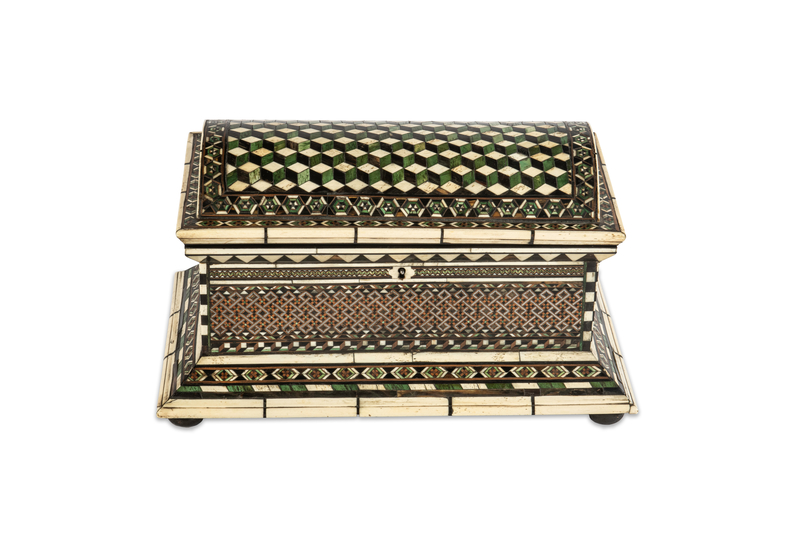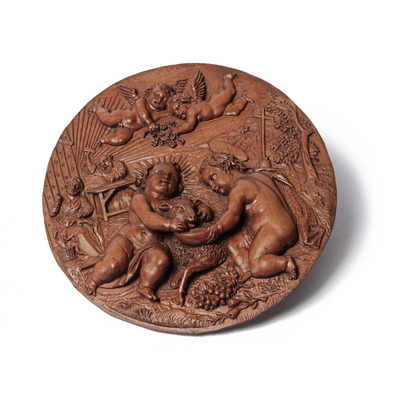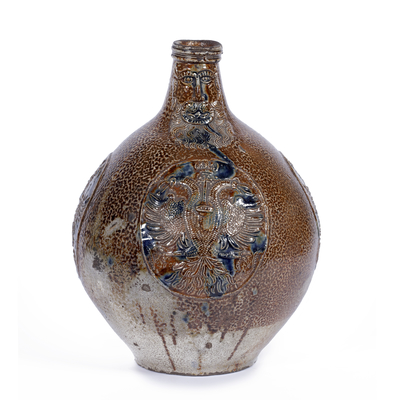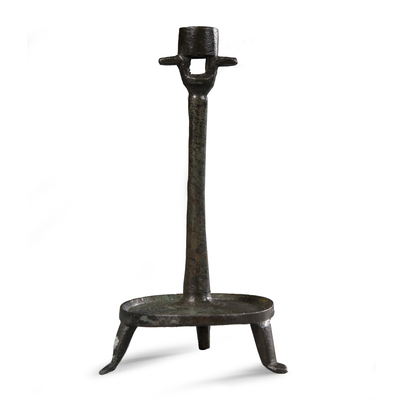Casket with domed cover, Embriachi school
Global shipping available
- Origin
- Venice, Italy
- Period
- First quarter 15th century
- Material
- softwood base, glued with wood and bone (some colored green), pewter
- Height
- 21 cm
- Width
- 36 cm
- Depth
- 22 cm
- Literature
E. Berger, Prunk-Kassetten: Europäischen Meisterwerke aus acht Jahrhunderten, Hanns Schell Collection, Stuttgart/Graz 1998, pp. 89 - 101.
P. Lorenzelli & A. Veca, Tra/e: Teche, pissidi, cofani e forzieri dall’Alto Medioevo al Barocco, Gallereria Lorenzelli, Bergamo 1984, pp. 260 - 265.
F. Gualandi, L. Mor & Giuliano Gaggioli, Capsellae. Cassette-reliquario e cofanetti della collezione Fornaro Gaggioli. Secoli XIII-XVI, Bologna 2006, pp. 18 - 22, fig. 7, 8, 9.
M. Pall, Versperrbare Kostbarkeiten, Kästchen und Kabinette aus der Welt, Graz 2006, p. 38, 39.
Questions about this object?
Please use one of the contact options below:
Description
This large casket is decorated with characteristic geometric patterns of Embriachi. Lined at the top and the bottom with broad bands of white bone. The domed cover is decorated with a series of small cubes in white, green and brown coloured bone, and an inlaid band with a diamond pattern against a dark background. The smaller sides have interlacing half diamond shapes from black horn and white bone. The sides are decorated with pewter accents in an interlacing pattern, the same diamond pattern with a checkered filling. These patterns are created with the contrasting colors of wood, (colored) bone and pewter. This is ‘intarsia technique’, a term derived from the Arabic 'tarsi', which means 'incrustation'.







